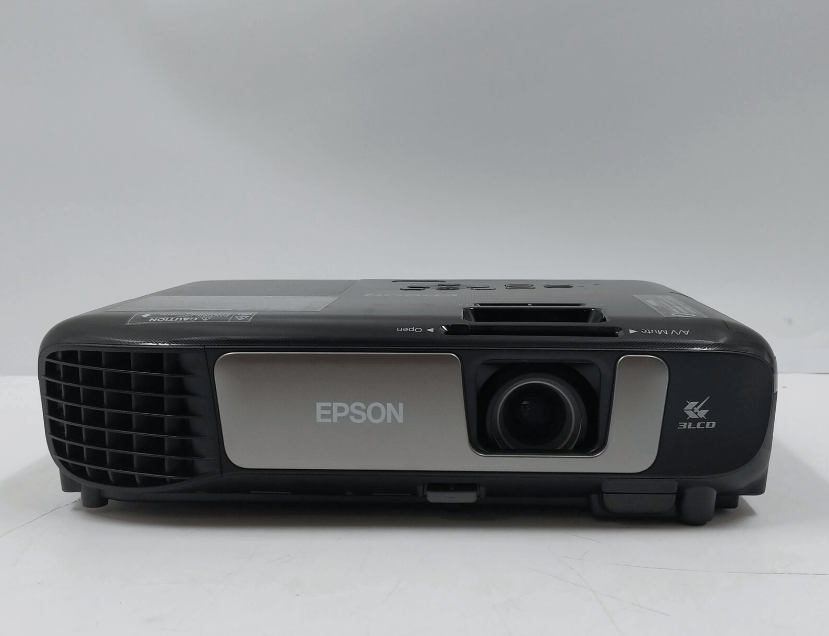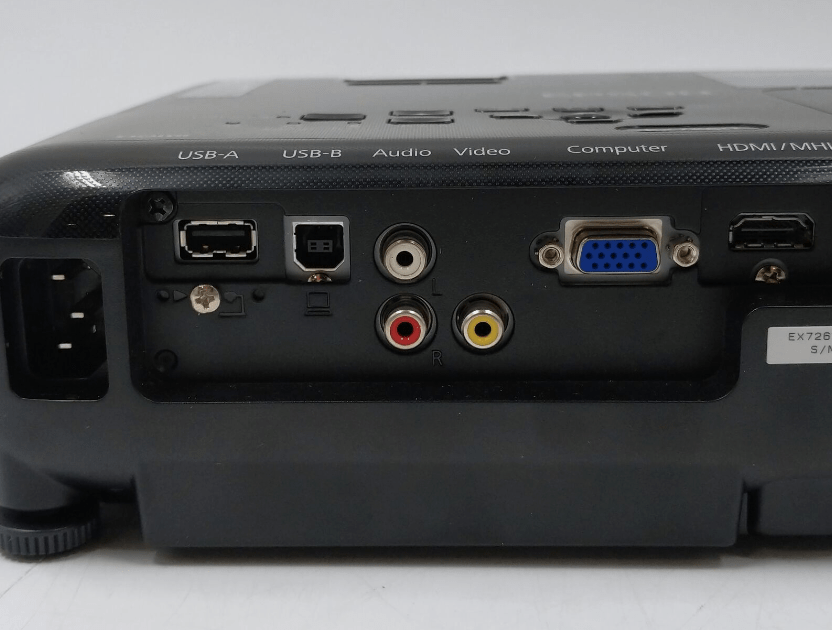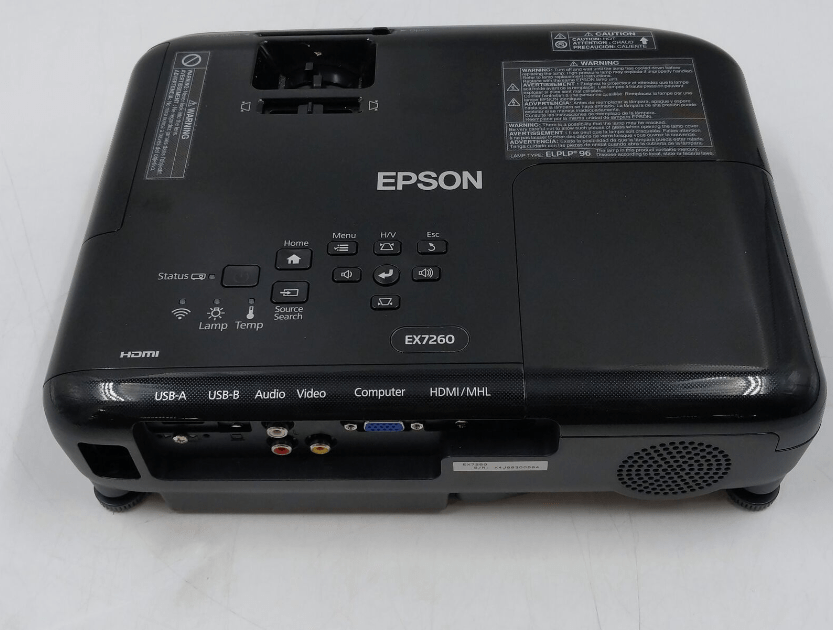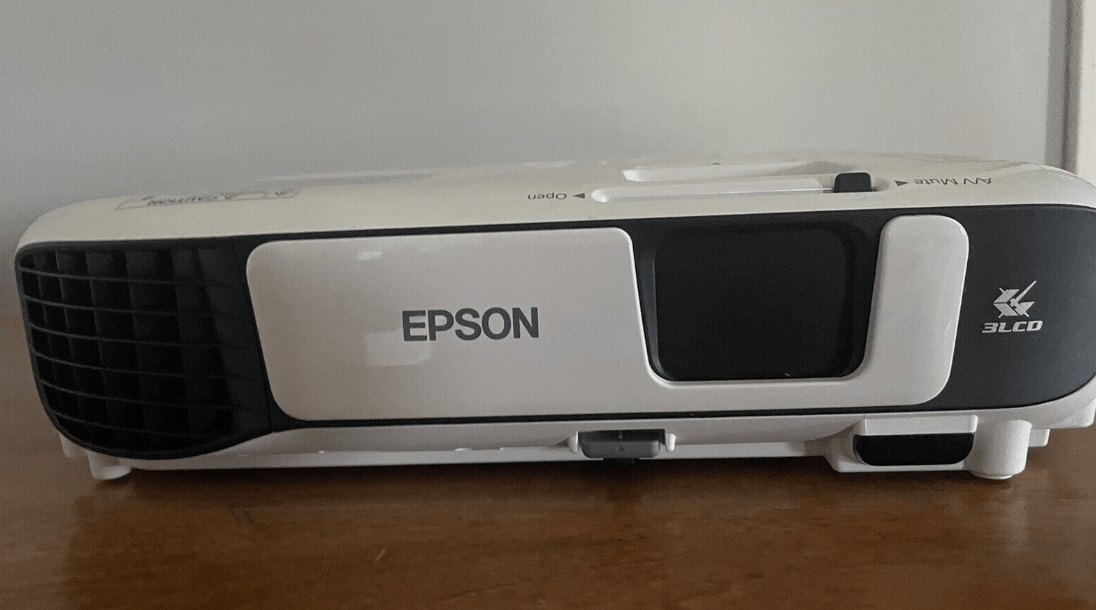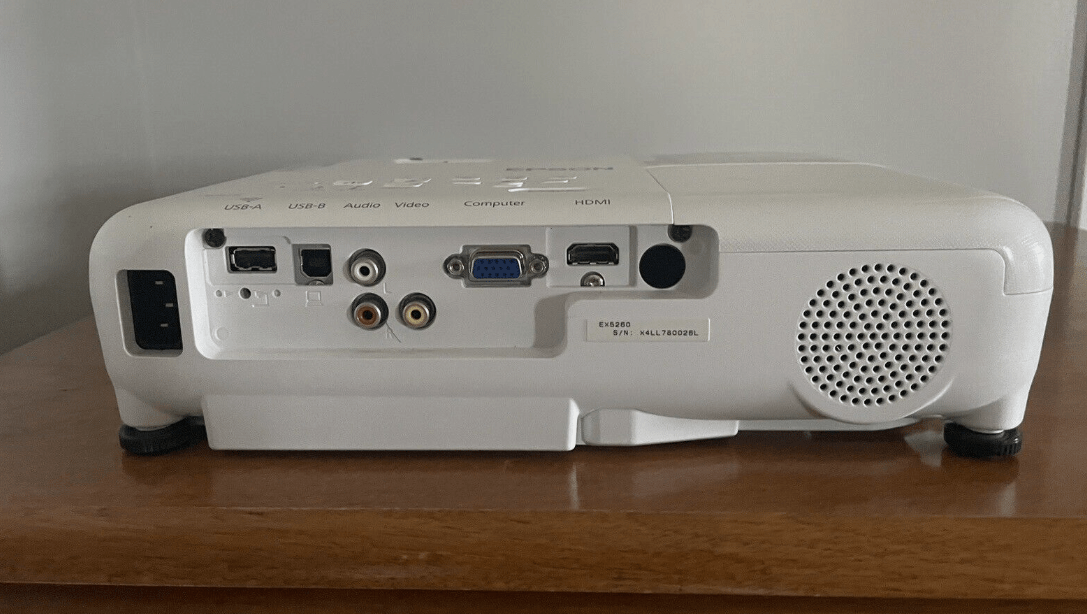At gagadget.com, your trust is our priority. We follow strict quality standards in our research, tests, and analysis of video projectors, to give you the best experience. Learn more
Epson Pro EX7260 vs Epson EX5260: Comparison
Hey everyone, it's Jim. Today we're comparing two popular wireless portable projectors from Epson: the Pro EX7260 and the EX5260. Both offer an impressive 3600 lumens of color and white brightness, along with Epson's 3LCD technology that produces vivid, colorful images. Plus, they both make it easy to connect wirelessly to laptops and mobile devices, which is a huge convenience. But as I've looked closer, I've noticed a few key differences between the two models in terms of resolution and inputs that are worth considering.
In this in-depth comparison, we'll break down how the EX7260 and EX5260 stack up in terms of image quality, features, ease of use, and more. I'll share my hands-on experience and research to give you a clear idea of which one is the perfect fit for your specific presentation needs and budget. By the end of this article, you'll know exactly which model is the right choice for you.
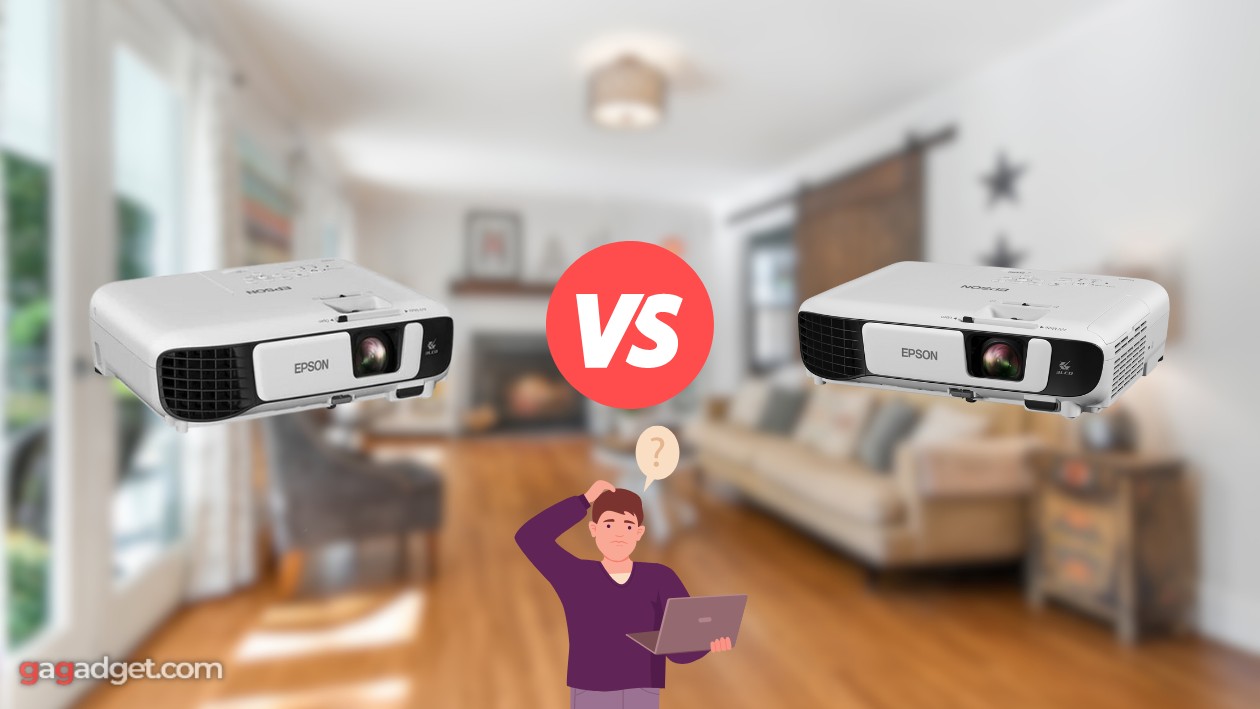
Epson Pro EX7260 vs EX5260: Quick Overview
I respect your time and aim to provide only the essential information, skipping the fluff.
If you're in a hurry, here's my quick take: Having used both the Epson Pro EX7260 and EX5260, I've found they are very similar portable business projectors. The main difference that stood out to me is resolution, with the EX7260 offering WXGA (1280x800) and the EX5260 having XGA (1024x768). Both have an impressive 3600 lumens brightness, convenient wireless connectivity, vibrant 3LCD technology, and versatile 1.2x manual zoom. One thing I appreciated about the EX7260 is that it adds an MHL-enabled HDMI port, RJ-45 Ethernet, and S-Video input for extra connectivity options.
In my opinion, you should choose the EX7260 if you need the higher WXGA resolution and additional connectivity options. But if XGA resolution is sufficient for your needs and you want to save some money, I think the EX5260 is a great alternative that still delivers excellent performance and features.
Table of Contents
- Epson Pro EX7260 vs EX5260: Full Comparison
- Epson EX5260 vs Pro EX7260: Design
- Epson Pro EX7260 or EX5260: User Reviews
- Epson Pro EX7260 and EX5260 Alternatives
- The Bottom Line: Which is Better, Epson Pro EX7260 or EX5260?
Epson Pro EX7260 vs EX5260: Full Comparison
| Feature | Epson Pro EX7260 | Epson EX5260 |
| Image |

|
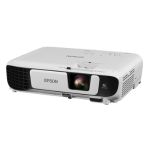
|
| Resolution | 1280 x 800 (WXGA) | 1024 x 768 (XGA) |
| Brightness | 3600 Lumens (ANSI) | 3600 Lumens (ISO) |
| Contrast Ratio | 15,000:1 (full on/off) | 15,000:1 (full on/off) |
| Display Technology | 3LCD | 3LCD |
| Color Processing | 10-bit | 10-bit |
| Aspect Ratio | 16:10 (WXGA) | 4:3 (XGA) |
| Light Source | 210W UHE Lamp | 210W UHE Lamp |
| Light Source Life | 6,000 / 10,000 hours (Eco) | 6,000 / 10,000 hours (Eco) |
| Zoom | 1.2x Manual | 1.15x Manual |
| Throw Ratio | 1.30 - 1.56 (D:W) | 1.48 - 1.68 (D:W) |
| Image Size | 83cm - 813cm | 76cm - 762cm |
| Keystone Correction | H ±30° / V ±30° | H ±30° / V ±30° |
| Speakers | 2W Mono | 2W Mono |
| Wireless Networking | Yes | Yes |
| Connectivity | HDMI (MHL), RJ-45, S-Video, USB x2, VGA | HDMI, USB x2, VGA |
| Dimensions (HxWxD) | 9 x 30 x 25 cm | 9 x 30 x 25 cm |
| Weight | 2.5 kg | 2.8 kg |
| Noise | 37 / 28 dB (Eco) | 37 / 28 dB (Eco) |
| Release Year | 2018 | 2017 |
The main difference between the Epson Pro EX7260 and EX5260 lies in resolution. The EX7260 offers WXGA (1280x800) resolution, which provides 20% more pixels than the EX5260's XGA (1024x768). This means the EX7260 can display sharper text and more detailed images, which can be especially beneficial for presentations with small fonts, charts, spreadsheets, and complex graphics. The wider 16:10 aspect ratio of WXGA is also a better fit for modern laptops compared to the 4:3 ratio of XGA.
When it comes to brightness, both projectors are evenly matched at 3600 lumens. The EX7260's brightness is rated in ANSI lumens, while the EX5260 uses ISO lumens, but in practice, they offer comparable light output. This is plenty of brightness for presentations in well-lit conference rooms and classrooms. And thanks to Epson's 3LCD technology, both models deliver equal color and white brightness for vibrant, true-to-life colors without any distracting rainbow effect.
Contrast ratio is also identical at 15,000:1 (full on/off) on both models. In my experience, this translates to deep blacks, bright highlights, and good overall dynamic range for punchy, impactful images. The 10-bit color processing ensures smooth gradients and lifelike hues.
Both projectors use the same 210W UHE lamp, rated for up to 6,000 hours in Normal mode and 10,000 hours in Eco mode. This provides a low cost of ownership and maintenance. It's also great that the lamps are user-replaceable when the time comes.
Both offer manual 1.2x optical zoom and horizontal/vertical keystone correction, which provides good flexibility for placement and quick setup. Throw ratios are similar, with the EX7260 ranging from 1.30-1.56:1 and the EX5260 from 1.48-1.68:1. So for a 100" diagonal 16:10 screen, the EX7260 can be placed 8.5-10.2 ft away, while the EX5260 would need 9.7-11 ft for a 4:3 image.
Wireless connectivity is a key feature on both models, allowing fast and easy projection from laptops, tablets, and smartphones without cables. The included Epson iProjection app enables screen mirroring and remote control from iOS and Android devices, which is very convenient. Both also offer quick USB Plug 'n Play setup for PCs and Macs, which streamlines the connection process.
One notable advantage of the EX7260 is its MHL-enabled HDMI port, which lets you directly connect streaming sticks and other MHL devices while also charging them. It also adds an RJ-45 Ethernet port for wired network presentations and firmware updates, along with an S-Video input for legacy devices, which could be useful in some scenarios.
In contrast, the EX5260 has a more basic set of inputs with a standard HDMI port, VGA, and dual USB Type A. While not as extensive as the EX7260, this should still be sufficient for most users' needs.
Both projectors have a built-in 2W mono speaker for portable audio. While not incredibly powerful, it gets the job done for conference rooms and small classrooms. And if needed, external speakers can always be connected.
Physically, the two models share the same compact chassis measuring 9 x 30 x 25 cm (HxWxD). The EX5260 is slightly heavier at 2.8 kg vs the EX7260's 2.5 kg, but both are eminently portable for life on the road. A soft carrying case is included for transportation and storage.
Both operate at a whisper-quiet 37 dB in Normal mode and 28 dB in Eco mode, which ensures minimal noise distractions during presentations.
Ultimately, the choice between the Epson Pro EX7260 and EX5260 comes down to whether you need the higher WXGA resolution and expanded connectivity of the EX7260, or if the EX5260's XGA resolution and more basic inputs are sufficient for your needs and budget. In my view, both are excellent portable projectors that deliver impressive image quality, brightness, and features for the price.
Epson EX5260 vs Pro EX7260: Design
Now, let's take a closer look at the design and build quality of the Epson Pro EX7260 and EX5260 projectors.
Epson Pro EX7260 Design:
Epson EX5260 Design:
The Epson Pro EX7260 and EX5260 have identical exterior designs. The lens is mounted off-center, with exhaust vents on the front and sides for heat dissipation.
On top, you'll find a sliding lens cover that protects the optics during transport, along with conveniently placed focus and zoom dials. The control panel features buttons for power, source selection, menu navigation, keystone correction, and volume adjustment. I appreciate the inclusion of a vertical keystone slider, which makes it easy to quickly square up the image during setup.
The connectivity panel is located on the rear, with the EX7260 offering a more extensive selection of ports including HDMI (MHL), VGA, S-Video, USB Type A and B, RJ-45 Ethernet, audio in, and a Kensington lock slot. The EX5260 retains the dual USB ports, VGA, and standard HDMI but omits the networking and legacy video inputs.
Both projectors have detachable feet on the bottom that can be adjusted to change the projection angle, which I've found helpful for aligning the image on the screen. There's also a threaded insert that allows for ceiling mounting with an optional bracket, providing flexibility in installation.
Build quality is solid on both models, with durable plastic housings that feel well-constructed. The lens barrel is metal for added rigidity. Buttons have a nice tactile response. Zoom and focus rings move smoothly but firmly hold their position.
Included in the box are a soft carrying case, remote control with batteries, power cable, USB and VGA cables, and quick start guides.
Overall, I find the Epson Pro EX7260 and EX5260 to have a functional, understated design that's well suited for portable professional use. The compact form factor and included carrying case make them easy to take on the go, while the solid build quality and intuitive controls inspire confidence in their reliability.
Epson Pro EX7260 or EX5260: User Reviews
Let's see what actual owners have to say about their experiences with the Epson Pro EX7260 and EX5260 projectors.
Epson Pro EX7260 User Reviews
Praises: "The EX7260's WXGA resolution is noticeably sharper than XGA projectors I've used. Text is crisp and graphics look great, even in well-lit conference rooms. Colors are vibrant and the contrast is impressive for such a bright projector. Wireless connectivity is quick and reliable - it's so convenient not having to run long cables."
Drawbacks: "The fan noise is definitely audible in quiet rooms, especially in Normal lamp mode. The 1.2x zoom range is good but I sometimes wish for a bit more flexibility in placement. No 5GHz WiFi support, only 2.4GHz."
Epson EX5260 User Reviews
Praises: "I'm impressed with the EX5260's image quality for the price. The XGA resolution is plenty sharp for PowerPoint slides and Excel sheets. Colors really pop and it cuts through ambient light with ease. Setup is a breeze with the simple keystone correction and fast USB connectivity. Love the compact design and included carrying case."
Drawbacks: "The built-in speaker is pretty weak, fine for a small room but struggles with larger crowds. I miss having an audio out jack to connect external speakers. No MHL support on the HDMI port for streaming dongles. Wireless range could be better, I sometimes lose connection if I move too far away."
Overall, users praise the Epson Pro EX7260 for its crisp WXGA resolution, vibrant color output, reliable wireless connectivity, and wide range of inputs. Some wish for quieter fan noise, a longer zoom range, and 5GHz WiFi support, but are generally very satisfied with its performance and feature set.
Owners of the Epson EX5260 appreciate its bright, colorful image quality, easy setup and operation, compact portable design, and affordable price for an XGA 3LCD projector. The main criticisms are the weak onboard audio, lack of an audio output, no MHL-enabled HDMI port, and occasional wireless dropouts at longer ranges.
Epson Pro EX7260 and EX5260 Alternatives
If you're not fully convinced by the Epson Pro EX7260 or EX5260, here are a couple of alternative portable business projectors to consider:
- ViewSonic PA503W: A WXGA 3600 lumen projector with HDMI, dual VGA inputs, 1.1x optical zoom, and a compact design at an affordable price (no wireless connectivity);
- BenQ MS560: An XGA 4000 lumen DLP projector with HDMI, VGA, USB reader, 1.1x zoom, and 10W built-in speaker in a 4.2 lb package (no MHL or wireless).
The Bottom Line: Which is Better, Epson Pro EX7260 or EX5260?
After comparing the Epson Pro EX7260 vs Epson EX5260, it's clear that both are very capable portable projectors for business and education. They offer identical 3600 lumen brightness, 3LCD technology for equal color/white output, 15,000:1 contrast, and convenient wireless connectivity.
The main reason to choose the EX7260 is if you need its higher WXGA (1280x800) resolution for sharper, more detailed images compared to the EX5260's XGA (1024x768). It's 20% more pixels and a wider 16:10 aspect ratio that, in my experience, is a better fit for modern laptops. The EX7260 also adds an MHL-enabled HDMI port for directly connecting streaming sticks, an RJ-45 Ethernet port for wired networking, and an S-Video input for legacy devices, providing more flexible connectivity options.
However, the EX5260 delivers comparable core features and performance, just at a lower XGA resolution and with fewer input options. If your presentations mainly consist of PowerPoint slides, charts, and graphics (rather than highly detailed images or small text), XGA should be more than sufficient based on my experience. And the EX5260's lower price makes it what I consider a great value pick.
Ultimately, I believe you can't go wrong with either the Epson Pro EX7260 or EX5260 for a reliable, bright, and easy to use portable projector. In my opinion, the EX7260 is worth the premium if you really need the extra sharpness of WXGA resolution and the additional connectivity options. But for many users, the EX5260 hits what I consider the sweet spot of price and performance, making it my overall recommendation for most portable presentation needs.
Go Deeper:
